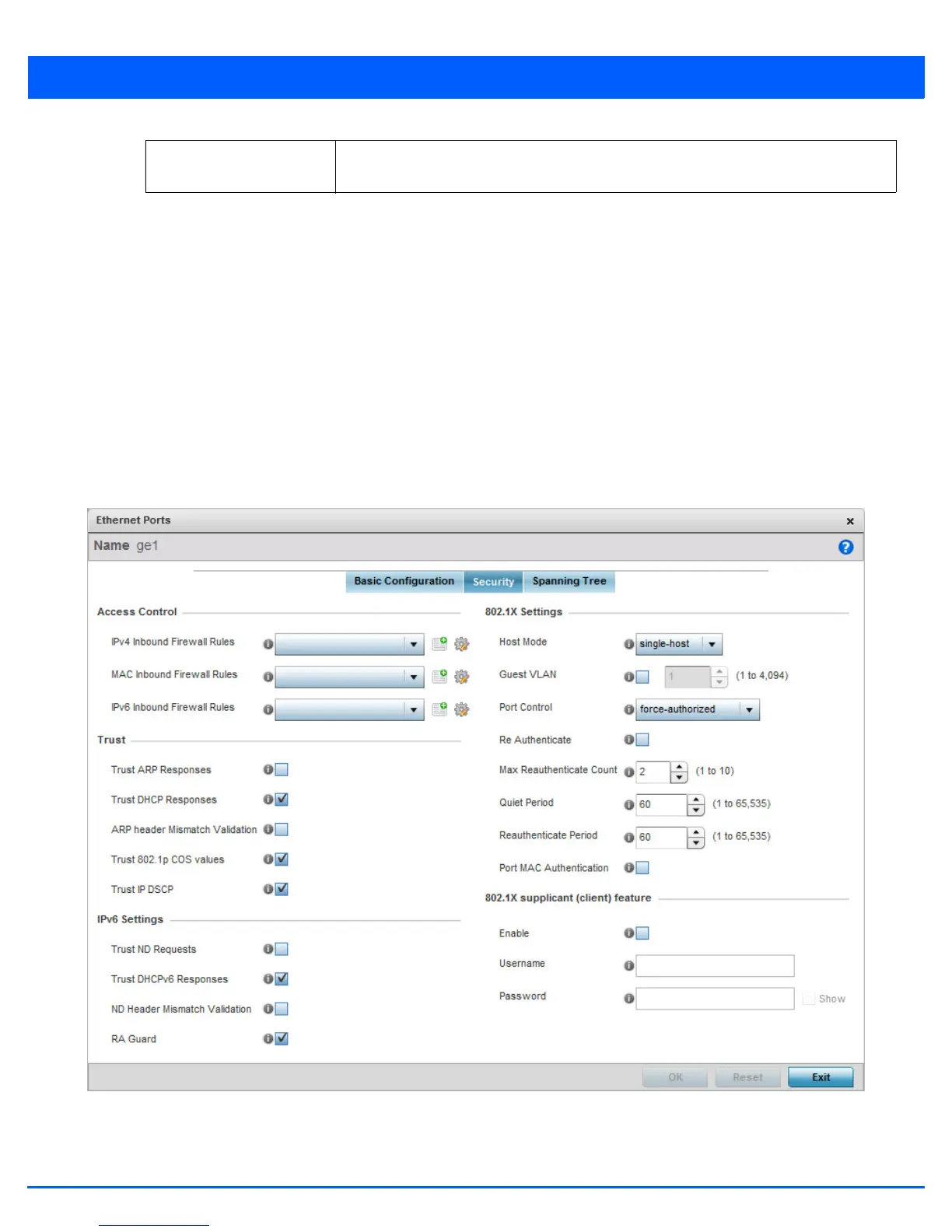5 - 228 WiNG 5.6 Access Point System Reference Guide
11. Select Enforce Captive Portal to automatically apply captive portal access permission rules to data transmitted over this
specific Ethernet port. This setting is disabled by default.
A captive portal is an access policy for providing temporary and restrictive access using a standard Web browser. Captive
portals provides authenticated access by capturing and re-directing a wireless user's Web browser session to a captive
portal login page where the user must enter valid credentials to access to the network. Once logged into the captive portal,
additional Terms and Agreement, Welcome, Fail and No Service pages provide the administrator with a number of options
on captive portal screen flow and user appearance. For information on configuring a captive portal policy, see Configuring
Captive Portal Policies on page 9-2.
12. Optionally select the Port Channel Membership option and define (or override) a setting from 1 - 8 using the spinner
control. This sets the channel group for the port.
13. Select OK to save the changes made to the Ethernet Port Basic Configuration. Select Reset to revert to the last saved
configuration.
14. Select the Security tab.
Figure 5-148 Ethernet Ports - Security screen
15. Refer to the Access Control field. As part of the port’s security configuration, Inbound IP and MAC address firewall rules
are required. The configuration can be optionally overridden if needed.
Allowed VLANs Selecting Trunk as the mode enables the Allowed VLANs parameter. Add VLANs that
exclusively send packets over the listed port.

